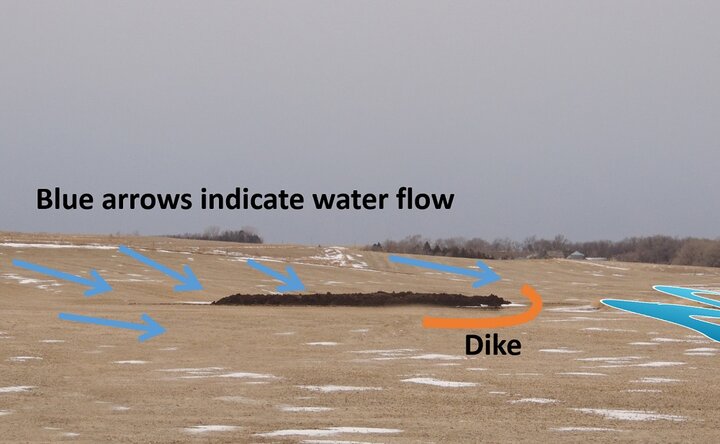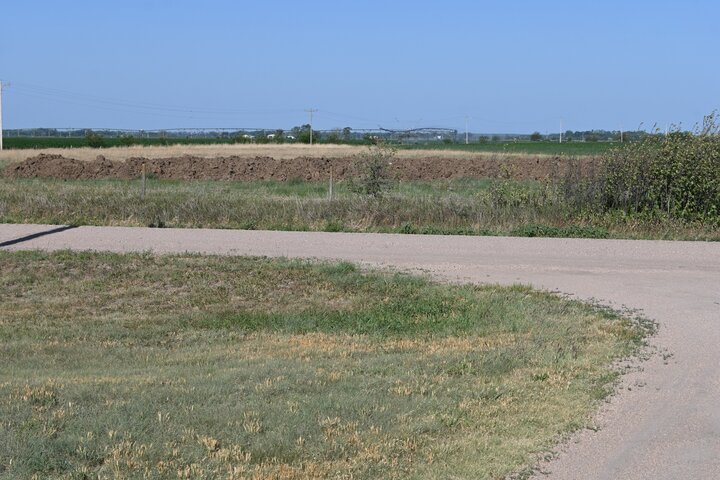Manure Stockpiles: Mind Your Manners
Manure stockpiles must be built following some regulations, but where those regulations end, manners should remain. I suspect that just about everyone reading this article has been told on more than one occasion, “Mind your manners!” Or, perhaps as a parent, it’s this very simple instruction that you now give to your kids as they head out the door to spend time with someone outside the household.
What does this have to do with manure management, you’re wondering? With livestock manure, regulatory requirements differ whether you own the animals that are creating the manure or you receive manure from a livestock farmer to use on your crop fields. Simply put, when manure is transferred from a concentrated animal feeding operation (CAFO) to anyone not associated with that livestock farm, regulations tied to the CAFO’s permit or nutrient management plan do not transfer with the manure. But does that mean the manure should be handled any differently? Where regulations end, manners should remain. Whether telling someone or being told ourselves, the message is simple: Behave politely.
Respect for ourselves guides our morals; respect for others guides our manners.
Laurence Sterne, 18th century author

As responsible land stewards, farmers who follow “good neighbor practices” may save on commercial fertilizer costs while at the same time protecting groundwater from contamination due to nutrient leaching. Properly stockpiled manure stored on field edges can be a “win-win” for farmers and their rural neighbors through addressing two common concerns: runoff and odors.
Preventing Runoff and Nutrient Loss
Diking
Manure stockpiles should be located on well-drained sites with slight slopes (less than 1-3%). If runoff risk is high; then diking around piles should be considered. Amy Schmidt, Nebraska Extension Livestock Bioengineer specialist, says that two to three feet high dikes constructed of soil (not manure or organic materials) particularly on the down-gradient side of the pile are recommended. Stockpiles should be on elevated sites to prevent contamination of water flowing to lakes, streams, ditches, and grassed waterways.
Setbacks

Ideally, manure storage piles should be placed at least 1,000 feet away from any home residences (following similar setback provisions outlined for municipal wells). Nebraska Department of Environment and Energy (NDEE) manure stockpile and in-field application standards require large animal feeding operations to keep manure applications be at least 100 feet from any surface water, well or intermittent stream flow; or at least 35 feet away from water sources with a vegetative (grass) buffer between the manure stockpile and at-risk zones. For small and medium animal feeding operations, the recommended stockpile setback and manure application minimum distance is reduced to at least 30 feet between the manure and any surface water, wells, or risk zones.
Site preparation
To reduce nutrient leaching and possible environmental negative impacts, stockpiled manure should be storage on compacted, solid soil bases and sealed to reduce potential nutrient leaching into the soil profile. Clay soils are excellent bases for manure piles; whereas, sandy soils are more susceptible to nutrient leaching. In some cases, manure stockpiles are placed on former truck harvest loading field edge zones; where the soil has been compacted during harvest. Land managers, however, must allow adequate room for setback distances between the field edge stockpiles and at-risk zones.
Minimizing Odors
Improving communication

Stockpiled manure stacked too close to homes and/or “freshly spread” odor issues are usually the top registered complaints from city/urban residents. Many times, the best solution is for manure managers to be proactive and follow “common sense manners.” Manure handlers need timely communication with neighbors regarding where manure stockpiles will be located. Also, piled manure for field applications should be spread timely showing you care about potential offensive odors.
We often smell with our eyes, so selecting the proper site for your manure stockpile, may mean communicating with your neighbors and receiving their input before making your final location decisions. Manure managers are encouraged to share stockpiling plans along with projections of how long the stockpiled manure may remain until spread on the field with potentially impacted homeowners, since informed neighbors may be more tolerate of short-term odors.
As with any successful communication, trust is very important. If landowners and manure applicators build strong relationships, then their neighbors will likely better know that their health and well-being are being highly valued. As livestock producers and manure applicators continue educate their peers and neighbors about the economic and environmental values of organic livestock manures; communities and residents become more accepting of manure stockpiles and application.
Timing
With good communication, you can avoid building a manure stockpile (and later when it is time to spread) at times that are less desirable for your neighbors. For instance, you may want to avoid building a stockpile nearby a neighbor the day before they’re expecting to have a big summer barbeque in their backyard. Additionally, stockpiled manure should be spread as soon as possible onto target fields. This may mean that landowners assure that hired manure applicators arrive and spread the manure as quick as possible.
All manure managers should focus on reducing nuisance odors risks and preventing nutrient loss from stored manure piles. With a little bit of planning and some good communication, maybe manure manager and neighborhood relationships can move from “good” to “great.”
This article was reviewed by Rick Koelsch, Amy Schmidt, and Leslie Johnson.